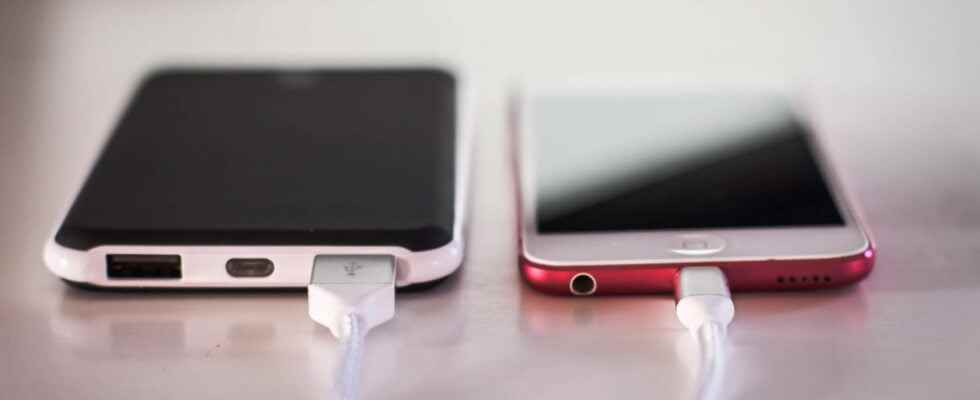USB-C CHARGER. In order to limit electronic waste, the European Commission plans to impose the use of USB-C format chargers for most mobile devices. An ambitious initiative, but which is not unanimous.
This is what is called having continuity in ideas. After a first attempt in 2009 which resulted in the signing with the manufacturers of electronic devices to promote the adoption of Micro USB, the European Commission still wishes to allow all European consumers to use one and the same charger for most of their mobile electronic devices (smartphones, tablets, headphones, digital cameras, speakers, game consoles, etc.). A universal charger with a USB Type-C format plug (also called USB-C for short) that manufacturers must offer on all of the products concerned. A text in this direction was presented September 23. This is a draft revision of the directive on the making available on the market of radio equipment. Once the project is adopted, manufacturers will have two years to eliminate current ports such as Micro USB or Lightning and equip their products with USB-C sockets to adapt to the new format and accept universal chargers. A reasonable timeframe for this important development, given the consequences it has on industrial production lines.
Limit the proliferation of electronic waste
The aim of the European Commission is twofold: on the one hand, to avoid users having to juggle multiple chargers, as is often the case; on the other hand, to limit the multiplication of electronic waste, by avoiding the immense waste of resources (metals, rare earths, etc.) which accompanies the digital transformation of society, in particular with mobile devices.
In practice, this initiative will only be definitively adopted once it has been negotiated by the European Parliament and after having obtained the approval of the European Council, where the Heads of State and Government of the 27 Member States sit. “Our project works in the direction of consumers and of the environment, while preserving innovation. It is the illustration of concrete Europe, which acts in favor of its citizens and the climate”, welcomed Thierry Breton, Internal Market Commissioner, quoted by The world.
“European consumers have been annoyed for long enough with the accumulation of incompatible chargers in their drawers. We have given the industry plenty of time to come up with its own solutions, but now is the time to take action. legislative in favor of a universal charger. This is a significant gain for our consumers and our environment, in line with our ecological and digital ambitions “, European Competition Commissioner Margrethe Vestager explained in a press release. The ambitious goal is to force manufacturers of smartphones, tablets, game consoles, portable speakers and other digital cameras to equip their devices with a USB Type-C charging port and to force them to sell. also their devices without charger. Today, the USB-C port is already present on most smartphones running Android (starting with recent phones from brands like Samsung, Xiaomi or Huawei).
Laptops and induction charging are not affected
However, the draft directive presented by the Brussels Commission has two notable exceptions: it does not concern laptops (even if some recent models charge very much via USB-C adapters, etc.) nor devices which charge only by induction, with wireless technologies. The manufacturers of these products will therefore not be obliged to deliver them with a USB Type-C cable, nor to integrate a charging mode by USB Type-C.
In addition, the European Commission also wants to push for the adoption of a fast charging standard by all manufacturers. For some specialists, USB Power Delivery, with a priori a minimum of 20 watts, should be the norm. The problem is that rapid charging technologies are more complex than “simple” charging systems, and that they rely on specific components and software, often specific to manufacturers and sometimes to certain models, in particular. to prevent damage to the batteries and other device components from overheating.
Apple recalcitrant in USB-C format
This draft revision of a European directive does not do the business of one of the big names in consumer electronics, namely Apple, whose iPhones are now recharged not on Lightning ports. The American is up against this text. “This regulation would stifle rather than encourage innovation and harm consumers in Europe and around the world.”, explains Apple. “We continue to fear that strict regulation imposing one type of connector will stifle innovation rather than encourage it, which will ultimately hurt consumers in Europe and across the world.”, continues the American group quoted by Reuters. “Over a billion Apple devices have a Lightning connector built in. We want to be sure that the new legislation won’t cause unnecessary cables to be sent, and won’t make these devices obsolete.”, insists the manufacturer. Rest assured, the manufacturer will have time, like the others, to adapt to the new legislation and to adopt this standard, already widespread in the Android world. And, for old devices, it will still be possible to use Lightning-USB-C adapters that can be found for a few euros at many resellers.
